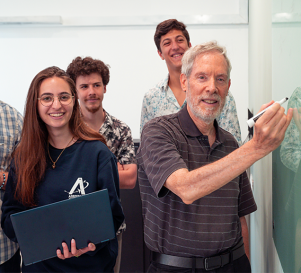Estimation of Rigid-Body States from the Fusion of Inertial and Strain Measurements
Modern flight vehicles are becoming increasingly flexible as design trends drive toward lighter structures and higher aspect ratios for improved aerodynamic efficiency. In conventional aircraft, the coupling between flight dynamics (rigid-body motion) and the elastic motion is limited, allowing separate analyses of flight dynamics and aeroelasticity (e.g., flutter). However, for configurations such as flying wings or very flexible aircraft, this separation breaks down. The elastic and rigid-body dynamics interact strongly, and a unified formulation is required to capture their mutual influence. This coupling can be leveraged to estimate the rigid body motion based on its impact on the elastic dynamic response. The study presents a combined aeroelastic and flight-dynamic model that integrates drag, gravity, and Coriolis effects into the equations of motion. The system is expressed in state-space form using rational function approximation of the unsteady aerodynamics. Building on this formulation, the second part of the study demonstrates how in-flight measurements of elastic response can be exploited to estimate the vehicle’s rigid-body motion using a Kalman Filter. The method is applied to the A3TB flying-wing testbed, which experiences body-freedom flutter in flight, combining the short-period and elastic bending and torsion modes. Results show that the unified model impacts flutter prediction and that the Kalman-based estimator successfully reconstructs rigid-body states from aeroelastic response data. Results highlight the potential for integrated modeling and state estimation in future flexible-aircraft systems.










